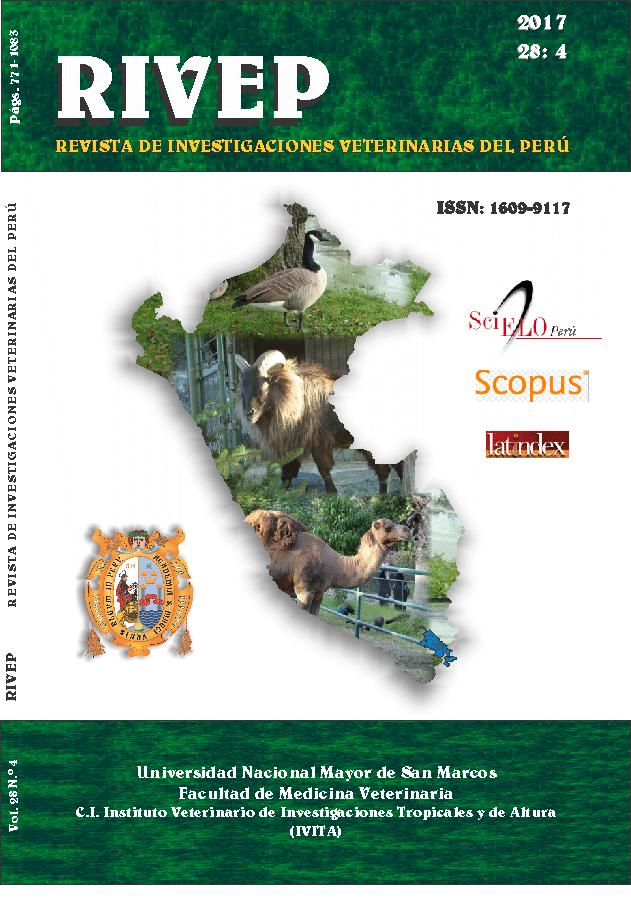Coxofemoral denervation with a minimally invasive approach to relieve pain in dogs with degenerative joint disease
DOI:
https://doi.org/10.15381/rivep.v28i4.13888Keywords:
coxofemoral denervation, degenerative joint disease, dogsAbstract
Hip dysplasia can be defined as a joint incongruity between the femoral head and the acetabulum, which usually develops to degenerative joint disease (DJD), with signs of chronic pain. A surgical option to reduce pain in patients with EDA is the pericapsular denervation of the hip joint. In the present study, this technique was performed through a minimally invasive approach in 10 German Shepherd dogs diagnosed with hip dysplasia and EDA through an orthopedic examination and radiographic imaging. To assess the efficacy of the technique a pain scale was applied in the pre-surgical on days 5, 10 and 15 post-surgery. The results showed an effective decrease of pain between days 0 and 15 and between days 5 and 15. Also, a favorable perception was evidenced by the owners, where six of them indicated that the surgery proved to be satisfactory and the others four indicated that the surgery was good, while all of them said they would request again the surgery to their pets. It is concluded that it is possible to reduce pain with a coxofemoral denervation through a minimally invasive approach in patients with EDA.Downloads
Downloads
Published
Issue
Section
License
Copyright (c) 2017 Alvaro Luzio Q., Adrián Henríquez G., Christof Fischer Wiethuchter

This work is licensed under a Creative Commons Attribution-NonCommercial-ShareAlike 4.0 International License.
AUTHORS RETAIN THEIR RIGHTS:
a. Authors retain their trade mark rights and patent, and also on any process or procedure described in the article.
b. Authors retain their right to share, copy, distribute, perform and publicly communicate their article (eg, to place their article in an institutional repository or publish it in a book), with an acknowledgment of its initial publication in the Revista de Investigaciones Veterinarias del Perú (RIVEP).
c. Authors retain theirs right to make a subsequent publication of their work, to use the article or any part thereof (eg a compilation of his papers, lecture notes, thesis, or a book), always indicating the source of publication (the originator of the work, journal, volume, number and date).










